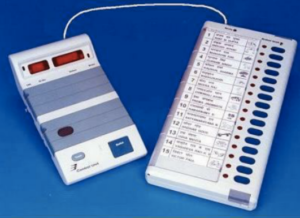Logistics Behind The World's Largest Election
With over 1.3 billion citizens and more than 900 million eligible voters, India stands as the world’s largest democracy, where the seamless execution of elections is essential to uphold democratic principles. Central to this electoral process lies the intricate logistics of managing Electronic Voting Machines (EVMs), which serve as the backbone of India’s voting mechanism.
Have you ever wondered how the entire voting process is managed while ensuring honesty and openness? It involves careful planning and the use of technology to address the complex logistics of Electronic Voting Machines (EVMs).
Electronic Voting Machines (EVMs) can make elections cheaper and easier because they don’t need as much moving around of paper ballots. This means less money spent on things like transportation and storage. Let’s deep dive into the process and understand the Explore the complexities of democratic processes.

Preparing and Allocating EVMs:
The Election Commission of India (ECI) meticulously assesses the required number of EVMs for each constituency based on voter data and historical trends. EVMs are allocated to states and constituencies, considering factors like population density and polling station distribution.
Secure Storage and Distribution:
EVMs are securely stored in closely guarded warehouses under the vigilant supervision of the Election Commission, preventing tampering or unauthorized access. Prior to elections, EVMs are distributed to polling stations along with ancillary equipment, such as Voter Verifiable Paper Audit Trail (VVPAT) machines, in tamper-evident containers.
Phased Deployment:
In multi-phase elections, EVMs are deployed in a staggered manner across different phases. This involves moving EVMs from one constituency to another as the electoral process progresses.
Redeployment:
After the completion of voting in a particular constituency or phase, EVMs are redeployed to other constituencies where the subsequent phases of elections are scheduled. This dynamic redistribution helps optimize the use of EVMs throughout the election process.
Time-Critical Delivery:
To ensure the time-critical delivery of EVMs, the Election Commission works closely with various logistical and transportation agencies. Specialized logistics and coordination teams are often employed to manage the swift and secure movement of EVMs from storage facilities to polling stations.
Transportation Challenges and Solutions:
Transporting Electronic Voting Machines (EVMs) across India’s diverse terrain poses significant challenges, including geographical diversity, infrastructure constraints, security concerns, and the need for timely delivery.
To address these challenges, the Election Commission of India (ECI) employs specialized convoys escorted by security personnel, utilizing various transportation modes such as trucks, helicopters, and boats. Strict protocols, including tamper-evident seals and GPS tracking, are implemented to safeguard the EVMs during transportation. These measures ensure the secure and timely delivery of EVMs to polling stations, maintaining the integrity and fairness of the electoral process.
Last minute redistribution
Dynamic Allocation: Adjusting the distribution of EVMs based on voter turnout and last-minute changes in polling locations requires agile logistics. Real-time tracking and communication systems are vital to managing these dynamic scenarios.
Contingency Planning
The Election Commission develops robust contingency plans to address any unforeseen events or delays in the delivery of EVMs. These plans include backup strategies and alternative transportation routes to mitigate risks.
Ensuring Security Measures:
Stringent security protocols are enforced to safeguard EVMs during transportation. GPS tracking and other monitoring systems are employed, while security personnel provide round-the-clock protection to prevent theft or tampering.
Training and Deployment of Personnel:
Election officials and polling staff undergo rigorous training on the handling and operation of EVMs. Mock drills and rehearsals familiarize personnel with EVM functionalities, ensuring seamless operations on election day.
Post-Election Retrieval and Storage:
After polling concludes, EVMs are retrieved from polling stations and transported back to secure storage facilities. Under stringent surveillance measures, EVMs are stored until the counting day, maintaining the confidentiality and integrity of the voting process.
Maintenance and Quality Assurance:
Regular maintenance checks and quality assurance measures uphold the functionality and accuracy of EVMs. Random audits and checks before and after elections bolster public confidence in the electoral process.
Conclusion
Managing the logistics of Electronic Voting Machines in India’s elections is a monumental task that demands meticulous planning, robust security measures, and seamless coordination among stakeholders. The Election Commission, supported by dedicated personnel and stringent protocols, remains steadfast in its commitment to upholding democracy’s sanctity through effective EVM logistics management. As India progresses on its democratic journey, the evolution of EVM logistics remains pivotal in ensuring free, fair, and transparent elections for all citizens.

